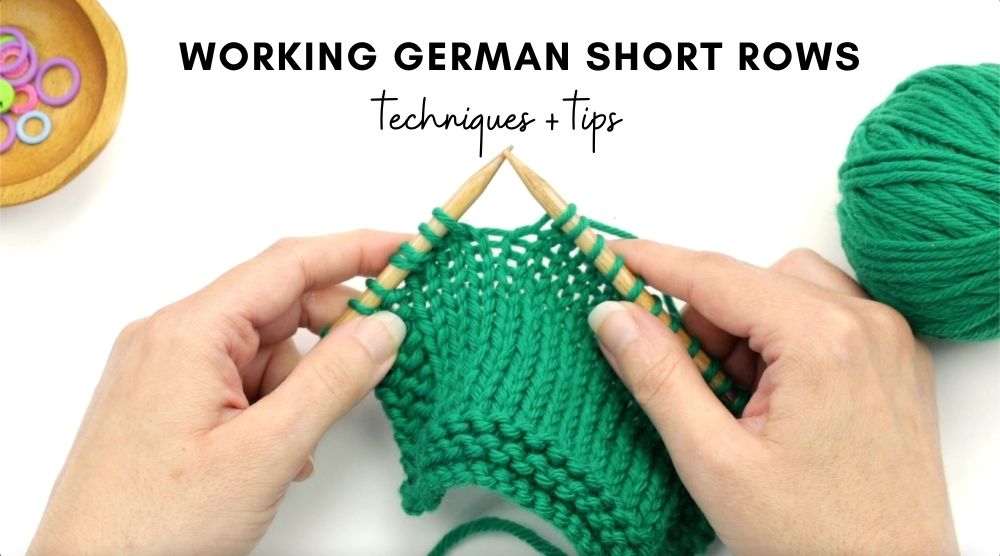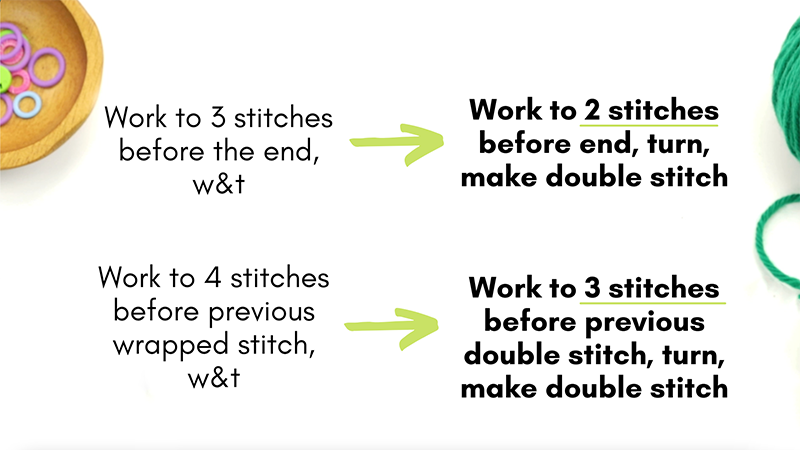There are lots of different short row techniques out there, with the most popular one being the “wrap and turn” short row. This is the kind you’ll often see in my patterns because they are thought of as being the most beginner friendly. But recently I’ve spent some time with “German short rows“, another very popular method you may have heard of or mentioned in knitting patterns. And I have to say, it’s quickly become my favorite way to do short rows now! They are so easy to do and look very clean in the fabric, i.e, there isn’t much stitch distortion or gaps (it’s so easy in fact that the first time you do it you may think you’re doing it wrong – but it really is that simple).
In German short rows, instead of doing a “wrap and turn” you are doing a “turn, then make double stitch”. In the video below I show you exactly how this is done as well as how you “work the double stitches together” at the end. In addition, I share with you how you can sub in German short rows in patterns that call for wrap & turn (but I also explain that part a bit below so keep scrolling if you want to learn about just that part):
How to sub in German Short Rows for Wrap & Turn Short Rows
So let’s say you’re knitting one of my patterns that uses wrap and turn short rows but you want to sub in German short rows instead – how do you do it? It’s easy I promise! In essence, you want to work one additional stitch then specified in the instruction and then instead of doing the “w&t”, you just turn the work and then make the double stitch.
Let me give you some examples…if the pattern says to work to 3 stitches before the end and then wrap & turn, instead you will work to 2 stitches before the end (so you’ve worked one additional stitch than specified), you’ll turn the work and then make your double stitch. And if the pattern says to work to 4 stitches before previous wrapped stitch and then wrap and turn, you’ll instead work to 3 stitches before previous double stitch, turn the work and make a double stitch.
If your pattern has you working short rows in a stitch pattern, you can still sub in German short rows, but you’ll just need to pay attention to the stitch pattern and make sure you are staying in pattern even though you are changing up how many stitches you work before you turn the work.
I hope this tutorial has been helpful! I encourage you to give German short rows a try and if you love them, try substituting them in your next pattern!




